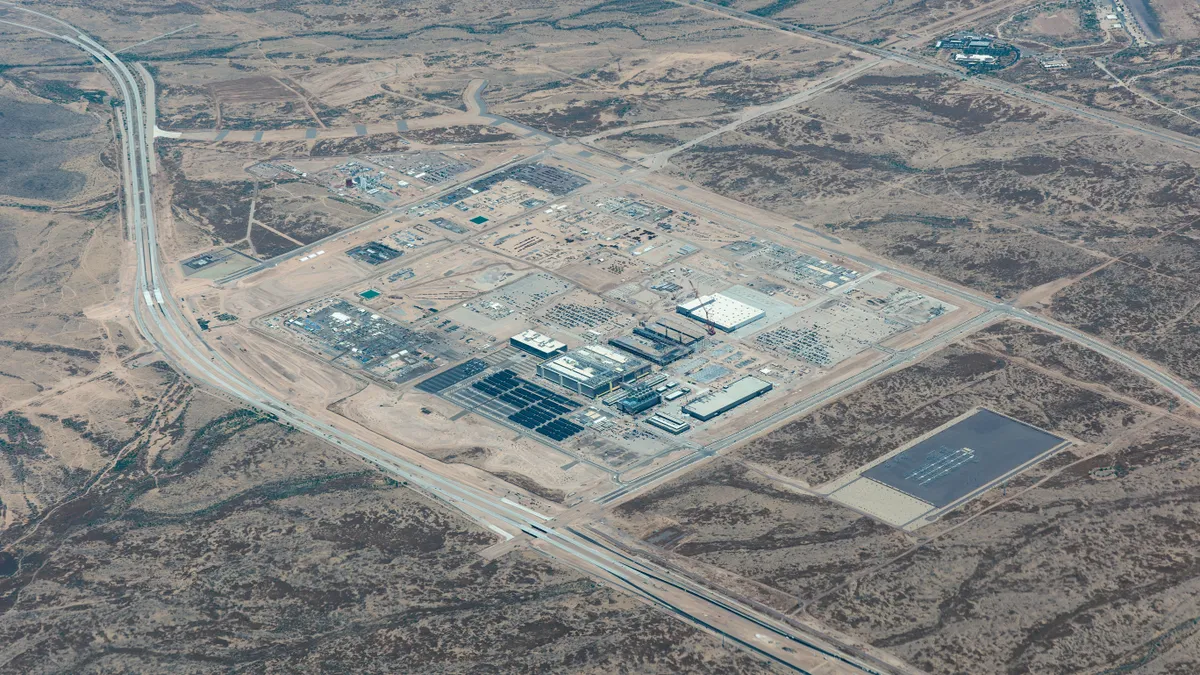How to attract workers to far-flung jobsites
Major projects away from city centers often lack a strong labor pool, so contractors must entice potential hires to relocate.

The construction industry is booming, with major infrastructure, manufacturing and data center work moving full steam ahead.
But the remote location of many of those projects means the surrounding area may not have the skilled labor required to do the job — or have much of a population at all. That makes it a heavier lift to get workers to temporarily relocate to where there might not be a nearby grocery store, medical center or even much housing.
“Infrastructure construction is booming and there needs to be more skilled labor in every market to meet demand,” said Jessica Roman, director of enterprise sales at Navan, a Palo Alto, California-based corporate travel management company.
Extended stay hotels and rental services like Airbnb have recently seen increased use from the construction industry. Still, contractors have had to get creative with how to make these projects more attractive to workers, such as offering bonuses and help with lodging.
Moving skilled labor to meet demand
Extended stay lodgings for project managers and tradespeople in construction are up 120% in the last two years through the end of November, according to data from Navan. The industry also outspent all other sectors on work travel overall by 9.2% in the 12 months through August. Companies are pre-paying for these types of reservations, Roman said.
Infrastructure investments have driven this demand up. The Biden administration’s Investing in America initiative, which includes the American Rescue Plan, the Infrastructure Investment and Jobs Act, the CHIPS and Science Act and the Inflation Reduction Act, “has put construction laborers on the road, fueling a race by extended stay hotels to win their business,” said Roman.
Getting skilled workers to these jobsites and keeping them there has become critical, especially as flying them there and back repeatedly is neither practical nor affordable.
Transit costs, especially for airplane tickets, have gone up, said Roman, and jobs are not necessarily near major airports.
“So it makes sense that they would want workers traveling less frequently and staying for longer periods of time,” Roman said.
Making far-flung jobs more attractive
Construction employers with jobs in far-flung areas have to get creative to entice laborers to their sites. Because of the nationwide shortage of construction labor, skilled workers may not feel the need to leave the jobs they have close to home, said Mike Dorsey, vice president of The Association of Union Constructors.
“How do we get a union pipefitter making a great wage in Chicago to go to Stanton, Tennessee, on a $6 billion Ford plant job?” he said, referring to the 3,600 acre mega campus under construction there.

Contractors are working to do that through economic incentives like higher wages, monthly bonuses, higher per diems and overtime opportunities. Additionally, contractors are working with owners to show them the grim reality of the situation, and how it plays a part in costs and schedules, said Dorsey.
For example, the $40 billion Taiwan Semiconductor Manufacturing Co. project in Phoenix had to push back its opening due to an “insufficient amount of skilled workers.” The Arizona Building Construction Trades Council reached an agreement with TSMC to help build the project, but the company still felt the shortage of available staff.
Contractors and owners are planning ahead too, Dorsey added, by looking at when a megaproject will be done, and how they can work to mobilize labor for the next one.
Other accommodations
Contractors are looking at lodging options beyond extended stays and hotels as well, said Brian Gallagher, vice president, corporate development at Graycor, an Oakbrook Terrace, Illinois-based contractor.
Gallagher recently facilitated a roundtable session covering this topic at a conference and found that owners and contractors are getting creative in marketing these jobs as unique opportunities, both work and living wise.

For example, some owners developed a site where workers could bring their trailers. Because these jobs may be long drives from grocery stores or healthcare facilities, they partner with local community members to bring food trucks and healthcare providers to where workers are staying.
“They’re finding ways to make it more attractive and add more amenities,” Gallagher said.
The extended extended-stay problem
This conundrum is unlikely to change, especially as major projects continue to break ground, said Roman, and “will continue to put more construction workers out on the road.”
Extended stay hotels are likely to be an attractive option, she added, because of affordability. They’re also likely to continue to play a role even in big projects in more populated areas because the short-term rental market has faced recent setbacks, including new regulation in New York.
Contractors who can handle the challenge will have an advantage, Gallagher said, as some owners are weighing workforce development efforts on qualifications to bid on projects, and it plays a factor in awarding jobs.
“When we’re proposing, owners are looking for ‘what is your plan?’ They want a very detailed plan for what your strategy is going to be,” he said.
Gallagher sees this as a continued challenge but also an “opportunity for owners and contractors to be more creative to find some solutions,” he added.
CORRECTION: This story has been updated to include the correct name of TAUC: The Association of Union Constructors.


